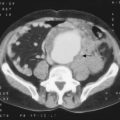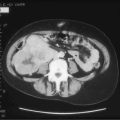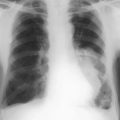CHAPTER 7 Management of malignant disease
Screening
Examples of screening programmes being carried out at present are:
Premalignant conditions
General symptoms and signs of malignant disease
Diagnostic procedures
Biopsy
This is mandatory, and may be carried out in a variety of ways:
Staging and grading of cancer
Clinical staging
An example of this is the Manchester Classification of carcinoma of the breast (→ Ch. 10). This is based purely on clinical findings but is somewhat imprecise.
Clinical and pathological staging
A method that is based on pathological staging only is Dukes’ Classification for colorectal carcinoma (→ Ch. 14).
Tumour markers
Treatment of cancer
Radiotherapy
Delivery of radiotherapy
Radiotherapy can be delivered to the site of a tumour in three ways:
Use of radiotherapy
Radiotherapy can be used in four ways:
Palliative radiotherapy
| General | Tiredness, malaise |
| Skin | Rashes, moist desquamation |
| Blood vessels | Endarteritis obliterans. Impairs blood supply. Progresses for many years after treatment. Many of the effects on other systems may have endarteritis obliterans as a precipitating cause |
| Healing | This is delayed, e.g. failure of skin grafts, anastomotic breakdown, intestinal fistulae |
| Renal tract | Frequency, cystitis |
| GI tract | Nausea, vomiting, anorexia. Irradiation proctitis (after irradiation of the cervix), causes rectal bleeding and tenesmus. Small bowel irradiation may give rise to intestinal fistulae and strictures |
| Head and neck | Xerostomia (dry mouth). Epiphora (red-watery eye) due to damage to tear duct |
Chemotherapy
Side-effects
Chemotherapy is not only toxic to malignant cells but also to normal body cells, especially those with a high turnover rate, e.g. bone marrow and GI epithelium. Many side-effects are extremely unpleasant and should be carefully explained to, and discussed with, the patient prior to starting the course (→ Table 7.2).
| Non-specific | Nausea, vomiting, metallic taste, general malaise |
| GI tract | Oral ulceration, diarrhoea |
| Reproductive system | Loss of libido, sterility, mutagenesis |
| Bone marrow | Bone marrow suppression with anaemia, thrombocytopenia, (bleeding), leukopenia (infection) |
| Immune system | Immunosuppression. Opportunistic infections, e.g. candidiasis, and Pneumocystis carinii |
| Skin | Rashes, ulceration, hair loss (regrows after course is stopped) |
| Urinary tract | Cystitis (cyclophosphamide), gout due to massive tumour destruction, leads to hyperuricaemia, which may lead to renal failure – prevented with allopurinol |
| Oncogenesis | 20-fold increase in incidence of other malignancies |
Hormonal manipulation
Breast
The options available for hormonal treatment in breast cancer include:





